Shea Moisture is a Black owned hair care company in the middle of a racial identity branding crisis. It’s a racial identity branding crisis of such epic proportions that Rachel Dolezal is breathing a sigh of relief (and possibly seeking new employment?).
When Black business owners build their foundation on a Black clientele, it’s likely that they will one day ask: should I double down on cultivating a Black audience or should I try to “diversify” (i.e. “Whiten”) my customer base? Depending on your product and the stage of growth for your business, either decision could make sense at any given moment.
Just don’t do it the way Shea Moisture did.
A History of Marketing Fumbles
On one hand, Shea Moisture is the Black hair care company that made its fortunes selling “curl enhancing smoothies” and other awesome products to Black women wearing natural hair styles. On the other hand, Shea Moisture’s marketing department has repeatedly outed the company as that one Black student who grew up in a Black community; went away to college; became “successful” by working with White people; began distancing themselves from less privileged Black family and friends; and slowly forgot how to connect with the homies back at the crib.
Over the past few years, after cultivating an almost rabidly loyal fan base, the company seemed to lose its footing. They repeatedly walked into one avoidable marketing disaster after another. First, there were the complaints about their use of White children with straight hair in a marketing campaign. Sure the children are cute – but it struck many of Shea Moisture’s most supportive customers as tone deaf to use White children with straight hair to market Black hair care products to Black people.
After that came the #BreaktheWalls campaign, which was framed as the company’s efforts to “challenge the segregation” of the beauty care products aisle.
Seriously.
Because, evidently there is a thing where Black women feel disempowered because our hair products are in the “ethnic beauty” aisle (or section) and White beauty products are in the “beauty” aisle. So the campaign called for breaking the walls of separation that divide “ethnic hair” products from the “White hair” products.
After viewing the campaign ad, I had feelings. And questions. Lots of questions.
 Why did the Black woman in the ad need to wander from the aisle where other Black women were searching for—and evidently finding—their hair care products, to an aisle full of products she could not use (i.e. products made for White hair)?
Why did the Black woman in the ad need to wander from the aisle where other Black women were searching for—and evidently finding—their hair care products, to an aisle full of products she could not use (i.e. products made for White hair)?
Why are the first people we see in that aisle, a seemingly frustrated White mom with a light skinned Black child in a blonde Afro? Is the message that White moms of Black children don’t know that products for Black children may be in a Black hair care aisle?
Why does the main character wander up that aisle and stare longingly at boxes full of products never designed with her hair texture in mind?
I could go on – but you get the point.
Dollars and “Sense”?
Despite my irritation, I continued to buy the products because they work well with my hair (how’s that for customer loyalty?). But that was before the completely ass backwards move they made by releasing this commercial yesterday.
It features a light skinned Black woman wearing what our community calls “long, good hair”, two red-haired White women and a blonde White woman–all of whom bemoaned “hair hate.” As if…light skinned Black women with long, down the back flowing “ringlet” hair and White women are on the frontlines of battling hair hatred.
How Sway?
The backlash was swift. Within moments it seemed like every Black woman I know was online eviscerating the company’s piss poor marketing choices (myself included). But sometimes, even when God, Ancestors and the most visible Naturalistas are trying to hook us up, we play ourselves. Learn from Shea Moisture’s mistakes so you don’t end up like them.
Lesson 1: “Expand” and “Replace” are Not the Same Thing
There is nothing inherently wrong with wanting to cater to multiple audiences. But in order to grow as a business, you can’t do so in a way that pits one of your audiences against the other.
Let’s say your success is based on a Black audience. But for some reason you think “growth” means expanding into non-Black markets (see Lesson #2 below). In order to avoid Shea Moisture level mistakes, Black business owners must know the difference between expanding their customer base and replacing Black customers with White ones.
Corporations do this in a variety of ways. Some create a separate subdivision dedicated to cultivating new clients with different products. Companies that are positioned for success will have a marketing team that supports the new subdivision with its own brand and packaging.
Shea Moisture could have easily created an #AllHairMatters subdivision. They could’ve created an entire product line dedicated to helping Becky keep her hair blonde or red all without signaling a desire to replace Black consumers with White ones.
Remember Pepsi-Gate, when Kendal Jenner solved police brutality with a canned soda? People could boycott Pepsi after that commercial all they wanted. But Pepsi (like many corporations) owns 22 different brands that cater to multiple markets. Not drinking that one soda for a few days was not going to hurt their bottom line – because their bottom line is diversified enough to absorb the risk. Companies all over the world cultivate products for people with different needs and tastes. The ones that are successful don’t treat their most loyal consumer base as expendable in the process.
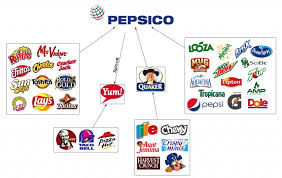
Message 1: Protect Your Base
Black business owners must always remember to protect home base. If you choose to expand into new non-Black markets, don’t do so by diluting the strength of your Black brand. Maintain that brand and devote the necessary resources to creating a separate division.
However, if you cannot afford the resources needed to simultaneously keep your Black brand thriving and develop a new White clientele, you need to pause and reevaluate whether or not this type of “expansion” is a good idea.
Lesson 2: Read Maps and Understand Market Projections
“Ye’ ain’t worthy to get shot by Cupid/But get shot by a cop that’s ruthless/I joke with the wicked men who wanna see us all in Attica/Start a hunned million kick starters and go on kick us back to Africa/I’ll be waitin there with Akon/I’ll be out of Dodge no challenger/This a new day nigga why you only thinkin you can run to Canada?” ~Jidenna, Bully of the Earth lyrics
Black communities in America alone spend $1.2 trillion annually. This means we spend more money than the country of Mexico (this isn’t even counting all the money we spend on underground economies). Our dollars spend just like everyone elses. They can fill up a Black owned business’ bank accounts too – when the business respects the clientele.
Though these are powerful metrics, sadly, many think Black people with resources don’t exist outside of the United States. I’ve counseled many Black business owners who want to grow their existing clientele. One of the biggest challenges I have is overcoming the lack of knowledge many have about global Black economies and the increasing numbers of African and pan African (i.e. Brazil) countries listed as emerging markets.
According to Price Waterhouse Cooper:
- The continent of Africa has the fastest growing middle-class of any continent. “The rise in Africa’s middleclass has given way to increased African consumption which could translate to large returns for firms invested in the burgeoning continent. Increased consumption could also translate into firms requiring more workers to meet with the rising demand which would increase employment and further continue the cycle of increasing the scope of the African middleclass.”
- 50% of the population growth expected between now and 2050 is going to be centered in Africa.
- By 2025 there will be 12 megacities in Africa.
- Africa is the continent with the highest mobile broadband growth.
Message 2: Think Globally
These are just a few of the indicators one should consider when determining where to expand next and what markets will have sustainable growth potential. Black business owners who want to expand need to stop equating “Black consumers” with “Black Americans”. It is a lot easier to find Black customers in emerging markets than it is to create an entirely new product and marketing strategy for White consumers here in ‘Murica (see Lesson #3 below).
Lesson 3: Operating as if the White Man’s Ice is Colder
As Black business owners we must stop treating our Black consumers as if they are the steppingstone we need to get to Becky’s White Wallet. Yes, culturally speaking, many of us were forcibly indoctrinated to believe the White man’s ice is colder. Through slavery and continuing systems of racial oppression, it’s easy to see why this belief persists.
But, it’s false. Because ice is ice.

Science tells us that ice is frozen water. It freezes based on temperature – not based on the race of the person holding it.
Before we launch a plan to get “White dollars” we have to recognize White people also think their ice is colder.
They were socialized just like we were, to value White people, products and institutions more than Black people, our products and institutions. If we think White ice is colder, they think Black ice can’t freeze. So if expanding your Black business into a White market seems like a good idea, you must factor this racist reality into your business plan and ask which makes the most sense:
A) Pouring countless resources into eliminating anti-Black stigma, converting Black customers into a White ones, all for the hopes of “replacing” your most loyal fans with ones that will barely tolerate you; or B) growing your Black consumer base by reaching into some of those emerging Pan African markets, where Black consumers are yearning for companies to meet their needs?
If you chose A as the better choice, just know that it has all the indications of a strategy driven by the owner’s internalized anti-Blackness reflected in the commercial space. #SorryNotSorry
Message 3: Don’t Use #AllProductsMatter” on Your Company
Remember, White Becky ain’t checkin’ for you or your Black products, boo. There’s no amount of marketing that is going to remove the “funk” of Blackness from your products. It may take more resources than you have available to convince Becky and her people to think otherwise. (Resources you could be putting towards global Black market expansion, per Lesson 2 above.)
Lesson 4: Black People Skills Matter
This is Christine. She is vice president of brand strategies for Shea Moisture and Nubian Heritage under the Sundial brands. According to her LinkedIn profile she has extensive experience in the areas most companies want in a VP of branding strategies; she clearly knows how to package and sell products.
However, based on the series of unfortunate marketing mistakes Shea Moisture has had over the past few years, one must assume that Christine has no Black friends and Shea Moisture has no empowered Black employees. Where are the Black brand strategies experts who could pull her to the side and tell her about how to market to Black people? If Shea Moisture were really committed to developing capacity to serve Black consumers, they would enroll the entire staff in a solid “how to market to Black people 100 and 200 level course (with a few remedial sessions thrown in).
Message 4: Define “Valuable Skills” Carefully
As I’ve told many clients over the years you have to not only know how to market a product but how to apply that marketing knowledge to a particular audience. Just because someone has been “in the industry” for decades, doesn’t mean they spent any time cultivating the necessary knowledge or skill sets necessary to cater to your consumers – your Black consumers. And if you’re selling to Black people, that’s the one of the most important skills to have.
Listen, Black owned companies don’t have to limit themselves to a Black clientele. However, before you launch an #AllClientsMatter business plan, just know that there are right and wrong ways to diversify your customer base. The route Shea Moisture took may have been one of the best examples of what not to do. Unless Black business owners want to join Shea Moisture in the Pepsi aisle, they better put some serious thought into this analysis.
***************
Lurie Daniel Favors is an author, attorney and the general counsel at a racial-justice law center in Brooklyn, N.Y. Get your copy of her e-book, “Afro State of Mind: Memories of a Nappy Headed Black Girl” here! Follow her on Twitter, or Instagram, “like” Afro State of Mind on Facebook or catch up on her latest Youtube videos!
Opinions expressed here belong to Afro State Of Mind(tm) only and do not represent those of any other institution.
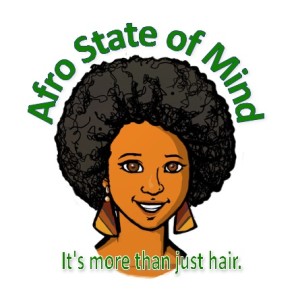
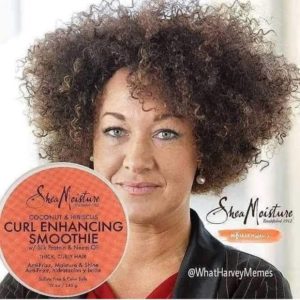






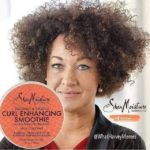
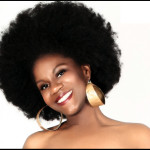
Speak Your Mind